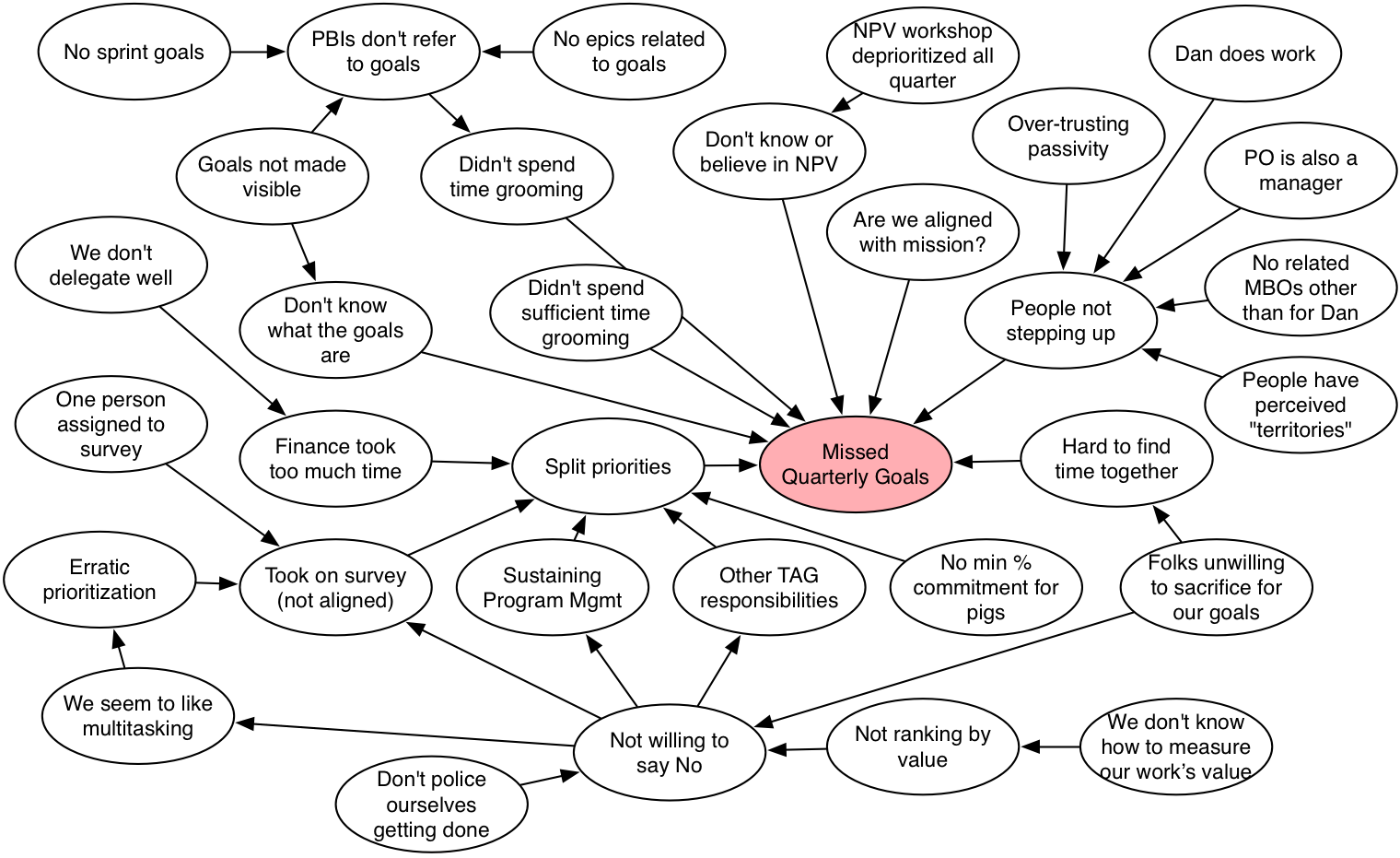-

Embrace Collective Responsibility
Context: It takes us time to decide to fix problems, and we let some problems fester because we don’t want to get anywhere near them. When we are on a team, we can blame someone or something else for a problem, and often do. We might blame our own permanent flaws for a problem, feeling guilty. None of…
-

Root Cause Mapping Party
Creative organizations, teams and leaders often encounter problems, as they explore new frontiers. In solving a problem, our biases can lead to a dysfunctional “fix”… Completing a task may involve many people and many steps. If it fails, we often focus on the last people involved or the last steps taken (Availability Heuristic). If we don’t look…
-

Measure Progress with Leading Indicators
Context: We can study others who succeed, imitate their activities and gain their skills. But these activities create nothing new. Once we have reached their capabilities, how do we know if we’ve improved? Completion metrics distract us from incremental improvement …
-

Religion vs Science in the Battle for Agile
While agile has zealots, it is not a religion. Agile is a scientific method that converts economic chaos to profit.
-

Product Owner
Enterprises often have lots of time-sensitive opportunities and insufficient skilled or creative people (called “developers” in this pattern) to do everything. Problem: Stakeholder competition distracts creative people, interferes with profitable work and creates office politics …
-

Develop Agile Managers, or Agile Dies
To sustain rapid adaptation and innovation, we need good agile managers. But management talent is rare, and agile management talent even rarer. Danger lurks when executives and managers don’t understand agile. You can tell when managers don’t understand agile: they don’t use it themselves. Agile methods, Scrum particularly, are perfect for managing creative teams, including management teams planning…
-

Strategy Scrum Teams
Management teams can use Strategy Scrum to manage themselves and more effectively finish important work.
-

Are We Agile? Answer 6 Questions to Find Out
Are we agile? The highest performing innovators follow 6 progressive agile base patterns. To assess your agility, ask how well you follow those patterns. To stay agile, follow the agile base patterns indefinitely. Audit your business agility with this guide.
-

Top-Down Agile Beats Bottom-Up
Leaders who publicly demonstrate agile methodologies and promote them top-down drive their organizations to sustain agile practices and succeed. But bottom-up agile transformations lack resiliency and generate cultural strife. Agile methodologies are now widely recommended for managing software development, but most large companies require transformation from entrenched “waterfall development,” an intuitively appealing strategy that has created massive project disasters (see Why…
